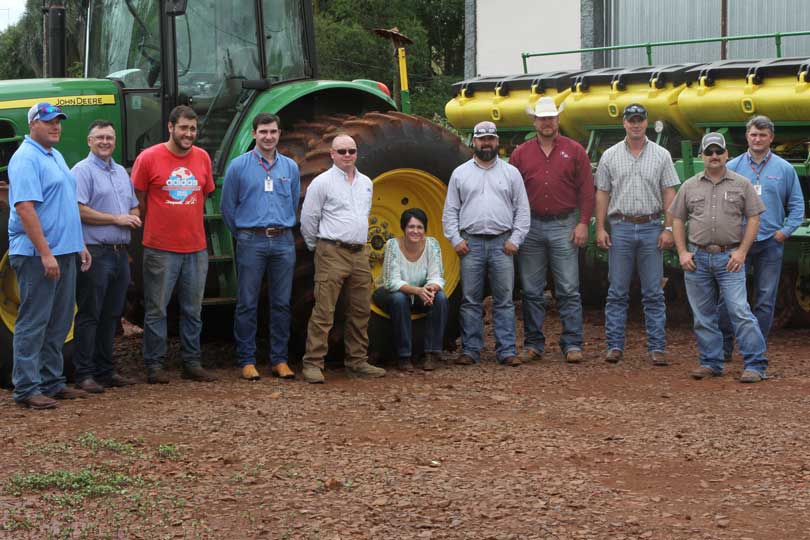By Justin Walker
Communications Specialist
Members of Texas Farm Bureau’s (TFB) AgLead XIII class traveled south of the equator last month for the final leg of their two-year program, where the participants visited Brazil to learn about the country’s agricultural practices.
The group met with farmers, ranchers and government officials from the southern Brazilian state of Paraná to discuss farming and ranching operations, environmental regulations and other aspects and challenges to agriculture in the area.
Paraná is one of the leading agricultural states in Brazil, accounting for 19.1 percent of national grain production. Soybeans are the leading commodity in the state at $17.3 billion, followed by poultry at $14.4 billion.
“Allowing our members to visit with farmers, ranchers and agricultural leaders from another country is crucial,” Whit Weems, TFB director of Leader Development, said. “The experience deepens their agricultural knowledge and helps develop their leadership skills, which is the main goal of the AgLead program.”
AgLead participants had several opportunities to meet with leaders and government officials concerning agriculture.
They first met with Sindicato Rural de Guarapuava, a similar organization to TFB, Justin Mitchell, of Tyler, said.
“There were a lot of differences and similarities when we compared Texas Farm Bureau,” he said. “They offer a platform for training and education. I’d say it’s a hybrid almost of an extension agency and a foreign bureau under one roof.”
Mitchell noted the Sindicato didn’t appear to have a strong legislative impact like TFB, but the organization does work closely with the Federation of Agriculture for the Paraná State (FAEP).
FAEP, which the group visited with later in the week in the capital city of Curitiba, is another organization that deals with agricultural policy issues within the state. While the Sindicato is primarily involved with local farmers and ranchers, FAEP serves as a statewide source of information, interacting with those both in and out of agriculture.
AgLead participants noticed Brazil faces many of the same issues as farmers and ranchers in the United States, including animal welfare.
“There seemed to be a similar stance on animal welfare,” Mitchell said. “You come to the city, the demographics don’t really look much different than any large city in the United States. You’ve got a huge millennial crowd, technology-driven, but far removed from agriculture.”
Many rural areas in Brazil lack basic technology like the internet, so farmers and ranchers are often disconnected from these conversations, Mitchell said. Despite the push from urban populations, many Brazilian farmers and ranchers don’t intend to change their practices without seeing a financial gain.
A lot of farmers and ranchers in the area are still using outdated practices, Mitchell said. FAEP is working with those growers to help streamline some operations.
Trade is another important issue for Brazilian agriculture. On the eastern side of the state lies the Port of Paranaguá, the largest agricultural port in Brazil. Fertilizer, lumber, paper and soybeans are just a few of the commodities exported from the port.
Paranaguá is connected to Curitiba by rail, which crosses through the mountains. Transporting goods by train takes twice as long as it would by highway but saves 40 percent on costs.
It’s a struggle for some farmers and ranchers to get their products to trading sites, Mitchell said, because of the location of their farms and the lack of infrastructure in the country. Organizations like the Sindicato are working to fix that.
AgLead participants were able to see how the Sindicato interacts with farmers when they visited the Wintershow 2018 in Guarapuava. The event, which takes place outdoors and showcases crop varieties and equipment manufacturers, was a highlight of the trip for Lee Calvert of Waxahachie.
“It was very interesting, because a lot of the shows that we see back home are indoors,” he said. “As far as an agricultural standpoint, to me, this was one of the more impressive things I’ve seen.”
Lee noted several companies came in before the show took place and planted crop varieties in front of where their booths would be. This is something he felt could be replicated in the Un

